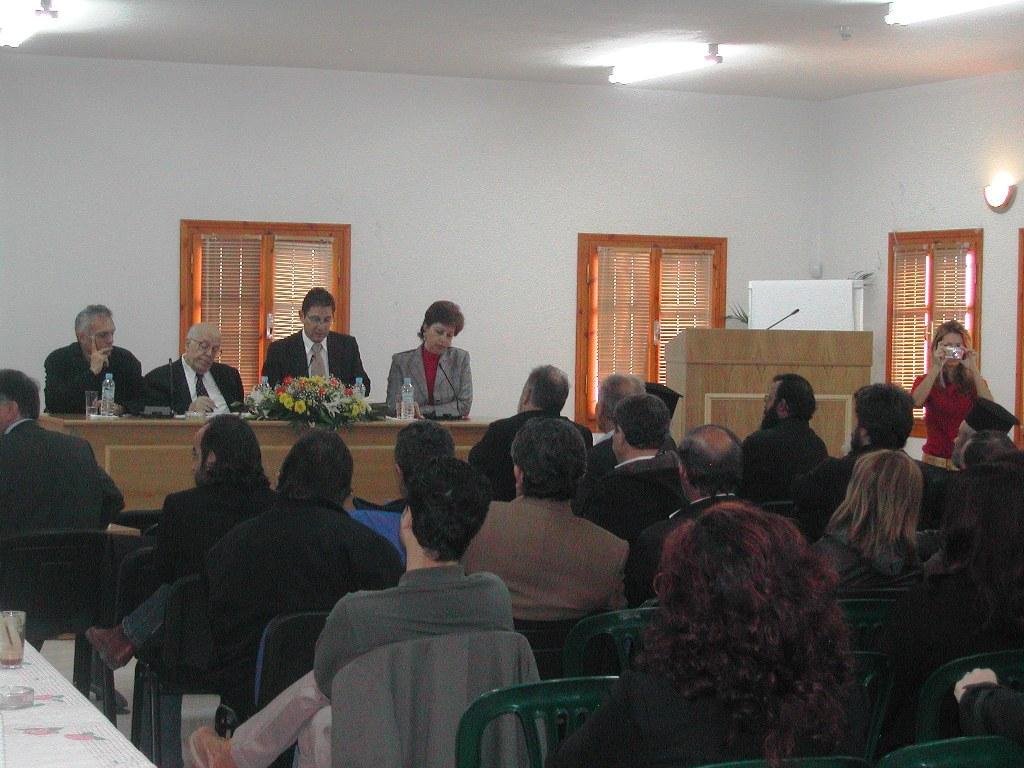Sustainable development of olive groves II [希腊]
- 创建:
- 更新:
- 编制者: Costas Kosmas
- 编辑者: –
- 审查者: Fabian Ottiger
approaches_2429 - 希腊
查看章节
全部展开 全部收起1. 一般信息
1.2 参与方法评估和文件编制的资源人员和机构的联系方式
有助于对方法进行记录/评估的机构名称(如相关)
Agricultural University of Athens (AUA) - 希腊1.3 关于使用通过WOCAT记录的数据的条件
编制者和关键资源人员接受有关使用通过WOCAT记录数据的条件。:
是
1.4 SLM技术问卷的参考

Olive groves under no-tillage operations [希腊]
Olive groves under no tillage and no herbicide application.
- 编制者: Costas Kosmas
2. SLM方法的描述
2.1 该方法的简要说明
Sustainable development of olive groves by applying no tillage operations and plastic nets on the soil surface
2.3 该方法的照片
2.5 采用该方法的国家/地区/地点
国家:
希腊
区域/州/省:
Chania and Heraclion prefectures of Crete
有关地点的进一步说明:
Crete
2.6 该方法的开始和终止日期
注明开始年份:
20
2.7 方法的类型
- 最近的本地倡议/创新
2.8 该方法的主要目的/目标
The Approach focused on SLM only
To promote conservation of natural resources
The SLM Approach addressed the following problems: Facing problems in convincing farmers to apply no tillage operations but the technique of using nets permanently on the soil surface is applied traditionally in extensional form.
2.9 推动或妨碍实施本办法所适用的技术的条件
社会/文化/宗教规范和价值观
- 阻碍
traditional mechanic cultivation of olive groves
Treatment through the SLM Approach:
了解SLM,获得技术支持
- 阻碍
loss of water
Treatment through the SLM Approach:
3. 相关利益相关者的参与和角色
3.1 该方法涉及的利益相关者及其职责
- 当地土地使用者/当地社区
The majority of land users are men. The approach concerned mainly producers located in less favourable areas
- SLM专家/农业顾问
- 国家政府(规划者、决策者)
3.2 当地土地使用者/当地社区参与该方法的不同阶段
| 当地土地使用者/当地社区的参与 | 指定参与人员并描述活动 | |
|---|---|---|
| 启动/动机 | 互动 | |
| 计划 | 互动 | |
| 实施 | 自我动员 | |
| 监测/评估 | 无 | |
| Research | 无 |
3.3 流程图(如可用)
具体说明:
Organization chart showing the steering structure concerning the implementation of agricultural policy
3.4 有关SLM技术选择的决策
具体说明谁有权决定选择要实施的技术:
- 仅限SLM专家
解释:
Decisions on the method of implementing the SLM Technology were made by mainly by land users supported by SLM specialists. Due to low farm income they did not cultivate the land, but they realise that no tillage operations were positive for the growth of the olives
4. 技术支持、能力建设和知识管理
4.1 能力建设/培训
是否为土地使用者/其他利益相关者提供培训?:
是
明确受训人员:
- 土地使用者
如果相关,请说明性别、年龄、地位、种族等。:
mainly men aged from twenties to sixties, Greeks
培训形式:
- 公开会议
涵盖的主题:
conservation of natural resource
4.2 咨询服务
土地使用者有权使用咨询服务吗?:
是
说明/注释:
Name of method used for advisory service: analysis of production; Key elements: cost production, total production
Advisory service is quite adequate to ensure the continuation of land conservation activities
4.3 机构强化(组织发展)
是否通过这种方法建立或加强了机构?:
- 是,少许
具体说明机构的强化或建立程度:
- 本地
具体说明支持类型:
- 财务
4.4 监测和评估
注释:
There were no changes in the Approach as a result of monitoring and evaluation
There were no changes in the Technology as a result of monitoring and evaluation
4.5 研究
研究是该方法的一部分吗?
是
明确话题:
- 经济/市场营销
- 生态学
提供进一步的细节,并指出是谁做的研究:
ISPOT, AUA
Research was carried out both on station and on-farm
5. 融资和外部物质支持
5.3 对特定投入的补贴(包括劳动力)
如果土地使用者的劳动力是一项重要的投入,那么是不是:
- 自愿
5.4 信用
是否根据SLM活动的方法给予信用值?:
否
6. 影响分析和结论性陈述
6.1 方法的影响
该方法是否帮助土地使用者实施和维护SLM技术?:
- 否
- 是,很少
- 是,中等
- 是,支持力度很大
decrease in soil loss and increase in water conservation
该方法是否有助于社会和经济弱势群体?:
- 否
- 是,很少
- 是,中等
- 是,支持力度很大
mainly men old aged, Greeks
Did other land users / projects adopt the Approach?
- 否
- 是,很少
- 是,中等
- 是,支持力度很大
land users in Pelloponese
Did the Approach lead to improved livelihoods / human well-being?
- 否
- 是,很少
- 是,中等
- 是,支持力度很大
increase in farmers income by reducing labour work despite the cost of nets
Did the Approach help to alleviate poverty?
- 否
- 是,很少
- 是,中等
- 是,支持力度很大
increasing income
6.2 土地使用者实施SLM的主要动机
- 减少工作量
- 环境意识
6.3 方法活动的可持续性
土地使用者能否维持通过该方法实施的措施(无外部支持的情况下)?:
- 是
若是,请说明如何维持:
there is a small cost in applying the technology
6.4 该方法的长处/优点
| 土地使用者眼中的长处/优势/机会 |
|---|
| cc 2 (How to sustain/ enhance this strength: 33) |
| bb 3 (How to sustain/ enhance this strength: 22) |
| 编制者或其他关键资源人员认为的长处/优势/机会 |
|---|
| aa 1 (How to sustain/ enhance this strength: 11) |
7. 参考和链接
7.1 方法/信息来源
- 实地考察、实地调查
- 与土地使用者的访谈
链接和模块
全部展开 全部收起链接

Olive groves under no-tillage operations [希腊]
Olive groves under no tillage and no herbicide application.
- 编制者: Costas Kosmas
模块
无模块





